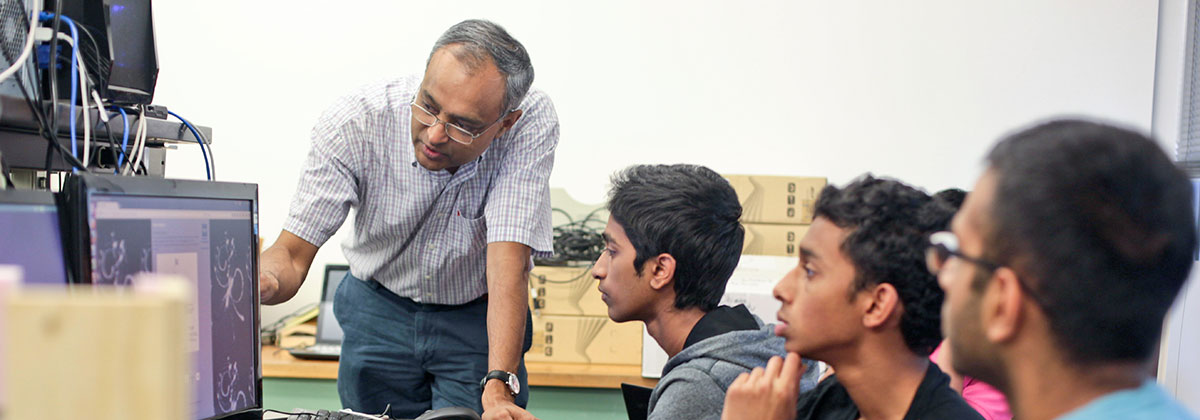Design and Prototyping of a Scintillator-based Semi-digital Hadron Calorimeter
Overview
The NIU team has been investigating a finely segmented scintillator-based hadron calorimeter for some time now. This option combines proven detection techniques with new photodetector devices. The absence of fluids/gases and very high voltages inside the detector increases longevity and operational stability.
Challenges
The main challenge for a scintillator-based hadron calorimeter is the architecture and cost of converting light from a large number of channels to an electrical signal. Our studies demonstrate that small cells (six-10) with embedded Silicon Photomultipliers (SiPMs)/Metal Resistive Semiconductor (MRS) photodetectors offer the most promise in tackling this issue. The use of these photodetectors opens the door to integration of the full readout chain to an extent that makes a multimillion channel scintillator calorimeter plausible. Also, in large quantities the devices are expected to cost a few dollars per channel, making the construction of a full-scale detector equipped with these photodiodes financially feasible.
The large number of readout channels can still pose a significant challenge in the form of complexity and cost of signal processing and data acquisition. Reducing the dynamic range of the readout is a potential solution. Monte Carlo studies have shown that this is a promising possibility. Scintillator cells with an area in the six-10 range are good candidates for one (digital) or two-bit (semi-digital) readout, where the lowest threshold is set to detect the passage of a minimum ionizing particle. Performance of PFAs on scintillator hadron calorimeter Monte Carlo's with a minimum of amplitude information in the form of thresholds also looks very competitive. The fabrication of cheap and compact electronics with just a few thresholds (three in the case of a two-bit readout) that will deliver the required performance is a realistic possibility for a scintillator hadron calorimeter.
Collaboration
We have coordinated our efforts with European groups pursuing similar interests. This interaction takes place under the umbrella of the CALICE collaboration, which bands together universities and labs from all over the world that share an interest in developing calorimeters for the linear collider. We are the only group in the United States actively investigating the promising option of a scintillator-based hadron calorimeter.
